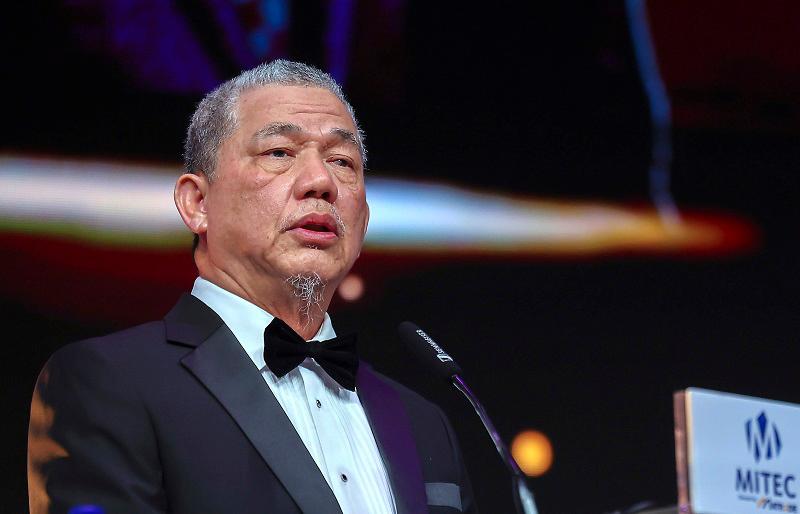KUALA LUMPUR: The Energy Transition and Water Transformation Ministry (PETRA) has assured that the government will carefully deliberate before making any decisions to embark on nuclear power development, Deputy Prime Minister Datuk Seri Fadillah Yusof said.
He noted that nuclear power is among the clean energy sources that could meet the expected surge in electricity demand, especially from industries, data centres, and electric vehicles, which require a stable and economically competitive supply.
Simultaneously, coal-generated baseload power is projected to decline significantly by 2035.
Accordingly, Fadillah said PETRA, through its special-purpose agency MyPOWER Corporation, is conducting a feasibility study that includes reviewing the latest nuclear technologies and revisiting the Malaysia Nuclear Power Corporation studies completed prior to its closure in 2018.
“Among others, we are looking into the conventions on the peaceful uses of nuclear energy, regulations for safety, security and safeguards, and stakeholder considerations.
“The study will provide recommendations to the government on the feasibility of nuclear power as an alternative fuel for electricity generation,” he told Bernama.
Fadillah, who is also the PETRA Minister, said the study would explore nuclear technologies suited to Malaysia, including Small Modular Reactors (SMRs), as newcomer countries generally prefer proven nuclear power technology with strong operational track records aligned with international best practices.
“Nonetheless, there are several dimensions to technology assessment, particularly the size and type of power requirement, development capital costs, operational considerations, risks, site and so on,” he added.
Nuclear Power in Malaysia’s Energy Mix
Fadillah said that there is no specific target yet for nuclear’s share in the energy mix, as a nuclear power policy must first be established.
“Nevertheless, among the scope of the study is to determine the suitable quantum of nuclear power in the energy mix,” he said, adding that there were several factors that should be considered such as provision of baseload supply, complement to variable renewable energy, industrial use or as part of a micro-grid or rural electrification solution.
The diversification of the mix also depends on the availability and reliability of other sources, development timeframe, and costs of each option, he added.
Fadillah explained that these factors are holistically evaluated in power planning to determine the optimal energy mix for Malaysia’s needs.
“To give you a sense of how much this varies - in France, nuclear power makes up about 70 per cent of their energy mix while Sweden has about 30 per cent. In comparison, China is at 5.0 per cent with a near-term target of 10 per cent.
“In a few newcomer countries that have recently established nuclear power such as in the United Arab Emirates, nuclear energy constitutes 25 per cent of the country’s electricity needs while Bangladesh expects a 12 per cent contribution from its first nuclear power plant,” he added.
Repurposing Coal-Fired Plants for Nuclear Power
In the United States, ageing and defunct coal-burning plants are being repurposed for solar, battery, and other renewable energy projects, partly due to their valuable existing grid connections.
While Malaysia has set a phase-out plan for coal-fired plants—aiming to reduce their share to 50 per cent by 2035 and fully retire them by 2044—Fadillah noted that some coal-fired power plants (CFPPs) due to retire before 2030 could potentially be repowered with gas to meet the fast-growing electricity demand.
This transitional measure would improve overall greenhouse gas emissions intensity, he explained, as gas-fired plants are more efficient and emit roughly half the carbon of coal per unit of electricity produced.
However, Fadillah emphasised that there are no immediate plans to repurpose retired CFPPs for nuclear plants.
“We have seen reports that new nuclear power plants could save up to 35 per cent on construction costs depending on the suitability of the existing site assets including grid connection.
“Nevertheless, as a general rule, any repurposing of CFPPs must fully comply with national regulations, international standards, and industrial good practices, particularly regarding safety, environmental protection, and nuclear security, to ensure a responsible and resilient energy transition,” he added.
Fadillah said evaluating potential sites for repurposing would be part of the nuclear power plant site selection process.
Building a Skilled Nuclear Workforce
Malaysia has a strong foundation in nuclear expertise. It has safely operated a nuclear research reactor for over 40 years, hosted large high-irradiation facilities for industrial sterilisation, and effectively managed low-level radioactive waste.
The Department of Atomic Energy Malaysia, alongside technical support organisations such as the Malaysian Nuclear Agency, is internationally recognised as a subject matter expert, providing nuclear consultancy worldwide.
Fadillah said that if the government proceeds with nuclear power, ensuring a sufficient, highly skilled, and competent workforce would be central to the development plan.
He highlighted that Malaysia already has a skilled workforce in power plants and industrial refineries, which could be further trained to support nuclear plant management.
“Additionally, Malaysia continuously engages with experienced nuclear-operating countries through international platforms such as the International Atomic Energy Agency (IAEA) to ensure peaceful uses of nuclear technology,” said Fadillah.
He added that collaboration and partnerships would be essential for capacity building and training to ensure the successful implementation of nuclear power in Malaysia.









